Qumulo Introduces Future of Data Management with Scale Anywhere Platform
Platform delivers performance, elasticity, and affordability to data workloads across all on-premises and cloud destinations.
This is a Press Release edited by StorageNewsletter.com on November 13, 2023 at 2:03 pmQumulo, Inc. unveiled the next version of its Scale Anywhere Platform, which empowers enterprises to overcome the challenges posed by unstructured data, providing a unified and scalable solution that drives efficiency, security, and business agility.
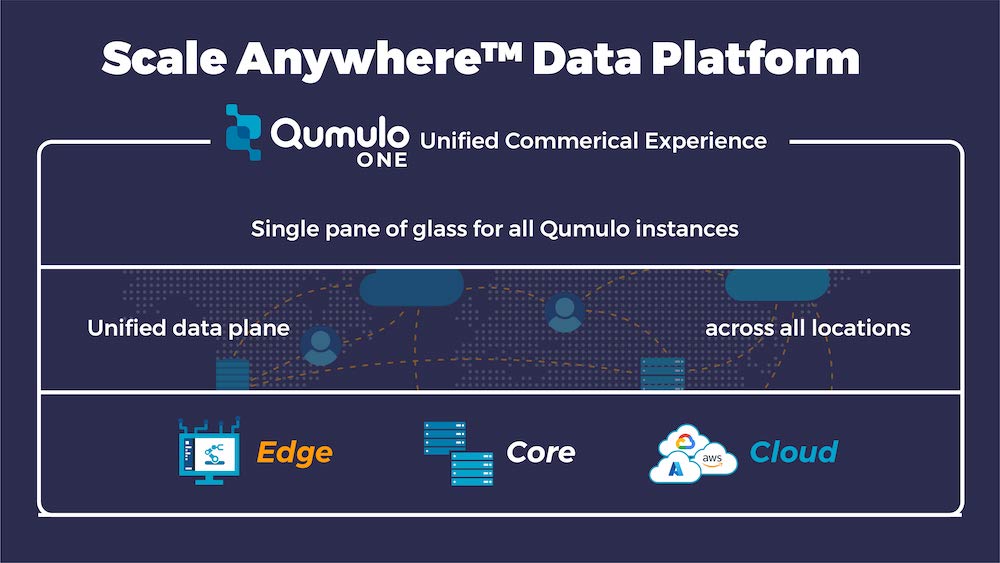
Qumulo is the simple way to manage exabyte-scale data anywhere – edge, core, or cloud – on the platform of your choice. In a world with trillions of files and objects comprising 100+ZB WW, companies need a solution that combines the ability to work anywhere with simplicity.
“Unstructured data is everywhere in the enterprise and growing at an unprecedented rate, a reality that traditional storage solutions have constantly grappled with,” says Bill Richter, CEO. “Qumulo finally fixes this with a software platform built for hybrid IT that scales to exabytes anywhere unstructured data is generated, stored, consumed, or managed.”
The new platform is comprised of 4 major components and introduces a new way to consume on-premises storage in the same way cloud storage is consumed.
The platform begins with Azure Native Qumulo (ANQ), a cloud-native enterprise file system with unlimited exabyte scale, economics, and performance elasticity. Jointly developed with Microsoft, ANQ eliminates the trade-offs customers face between scale, economics, performance, and features for file services in the public cloud.
ANQ scalable file service delivers:
- Economics: Is almost 80% less expensive than the closest alternative, and is comparable to the fully burdened on-premises cost of file storage.
- Elastic Performance: Scales capacity and performance independently.
- Unparalleled Data Durability: Offers 12 9’s of data durability.
- Cloud Service Simplicity and Speed: Can be configured and deployed directly from the Azure service portal in minutes.
- Rich Enterprise Data Services: Provides a rich set of data services, including quotas, snapshots, multi-protocol access, enterprise security integrations, and real-time data analytics.
Scale Anywhere further includes Global Namespace (Q-GNS), a unified data plane for an organization’s entire unstructured data, from edge to core and cloud. Q-GNS allows enterprises to access remote data as if it were local for all their workflows, from the most performance-sensitive applications to active archives. It delivers company’s rich set of data services (multi-protocol access, enterprise security integrations, snapshots, quotas, replications, etc.) across geographically distributed systems-edge, core, or cloud.
“We are rapidly adopting cloud to store our long-term radiology images, while keeping new images on-premises,” says JD Whitlock, CIO of Dayton Children’s Hospital. “Q-GNS makes it easy to bring our file-based workloads to the cloud without refactoring any applications.“
Qumulo allows customers to run the product on commodity hardware or public cloud of their choice.
Nexus, firm’s unified control plane, rounds out company’s next-gen Scale Anywhere platform. And Qumulo One provides an enterprise licensing program to use with any of vendor’s products.
Customers can now manage a globally distributed hybrid infrastructure and link distributed teams, all enabled by a single, secure enterprise platform.
Resources:
New Era of File Storage
Azure Native Qumulo
Azure Native Qumulo: Try It Now
Comments
Qumulo made a big splash with these 2 announcements, representing a major milestone for the company who confirms its shift to cloud and pure software model.
Launched more than 10 years ago appearing as the new Isilon at that time due to the founding team, the scale-out NAS positioning and appliance-based flavor, the management has understood the big shift of and on the market with tons of workloads moving to the cloud and therefore the mandatory need to be hardware agnostic with a full and pure software stack. Some usages come back on-premises as well. One key point to remember as well that differentiated Isilon and Qumulo was the fact that the first one offered erasure coding in the early 2000 years and the second one introduced it in 2016.
Qumulo, like several others, surfs on the U3 acronym we introduced many years ago, it means Universal, Unified and Ubiquitous storage and especially the anywhere property, running on-premises or in any clouds.
With more than 900 customers WW, end-users have picked Qumulo for the level of performance, its rich data services, its hardware independence and its ecosystem.
On average, a company's customer has 1PB in its cluster. Data is everywhere and files are created everywhere validating, once again, that file interfaces are here to stay, even if the S3 API has a key role to access same content with a potential remote dimension. It means that hybrid is a strong reality with clusters running at various places.
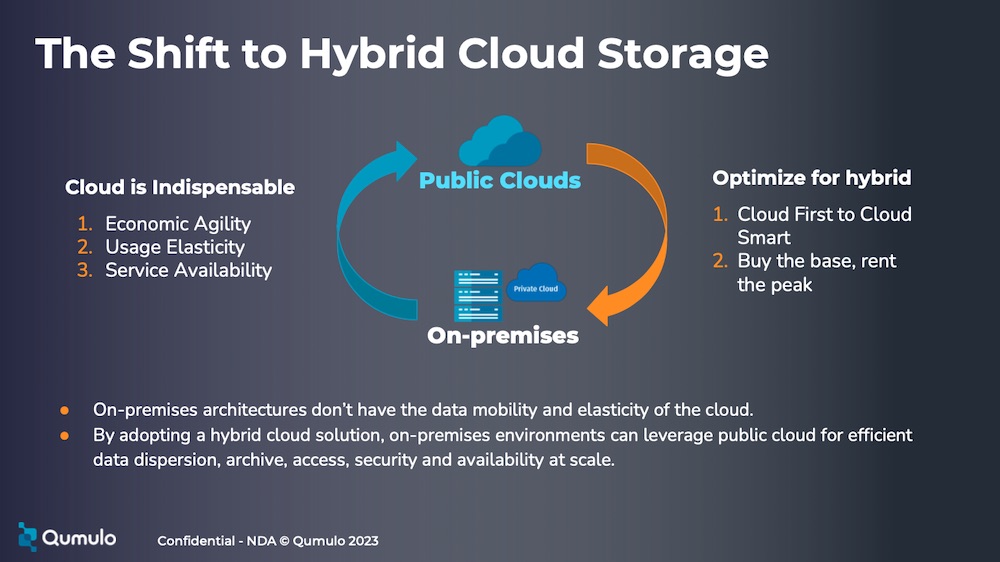
The first element is the ANQ or Azure Native Qumulo that illustrates a strong relationship with Azure. To be successful in the cloud, the firm justifies 5 key items around pricing, elasticity, durability, simplicity and data services. We understand that the adoption continues to add vertical market segments, no longer limited to a few key niches.
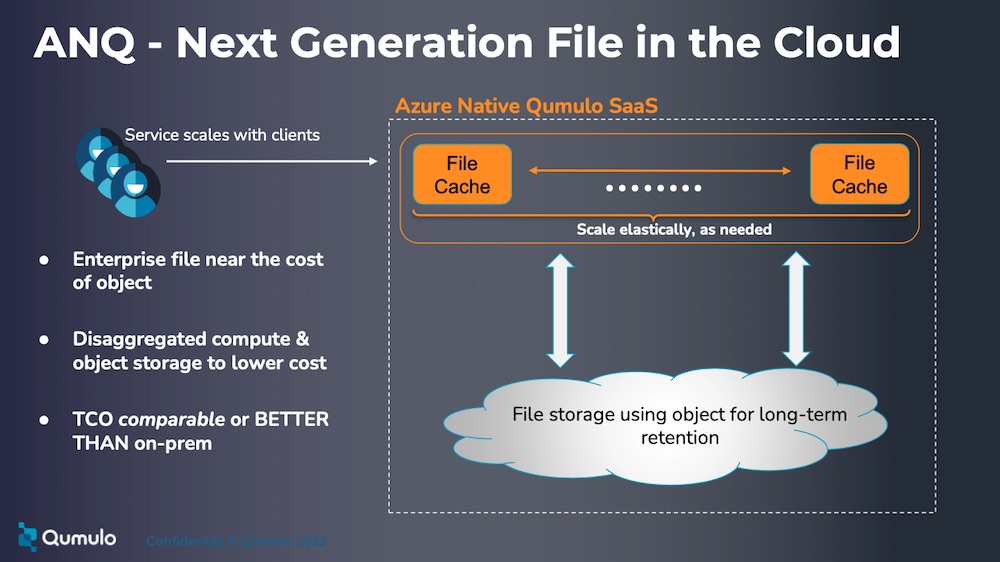
Economics is also key, we see as-a-service offerings popped-up everywhere. The vendor offers a minimum performance capabilities included in the base service and above that threshold, users pay only for the performance they consumed. The goal for the company seems to beat the on-premises similar solutions.
It is also interesting to see that partnership with the tons of file storage offerings on Azure with Microsoft solutions or NetApp ones to name a few. Qumulo understands that the pricing remains a key factor for end-users decision as all solutions appear the same when you don’t see and feel them.
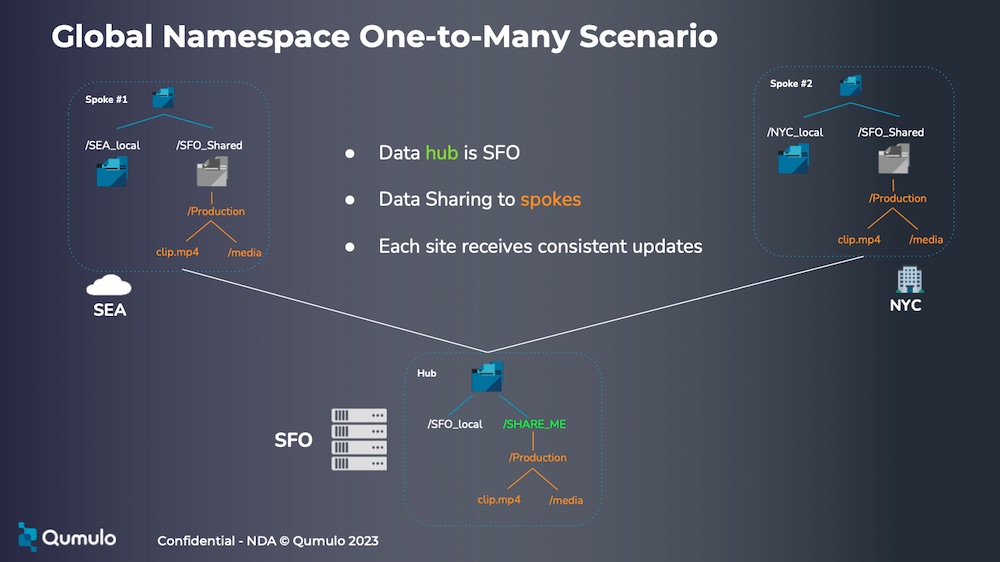
The 2nd element is represented by the GNS or Global NameSpace, it was expected for quite some time especially with such a solution able to be deployed in so various places, locations and flavors. The 1st iteration implements a master-slave or hub-spoke model with metadata propagated in all places to “see” files hierarchies and data only updated on the central point who send updates to remote sites. And the beauty of this is that it is independent of the nature of the deployment, on-premises or in the cloud. This GNS model makes sense also in a global data tiering model with secondary sites in he cloud receiving inactive data from the primary on-premises for instance in a 20/80 schema, thus reducing footprint in users’ data centers. Later iterations will offer more balanced approaches across sites, we'll wait more details.
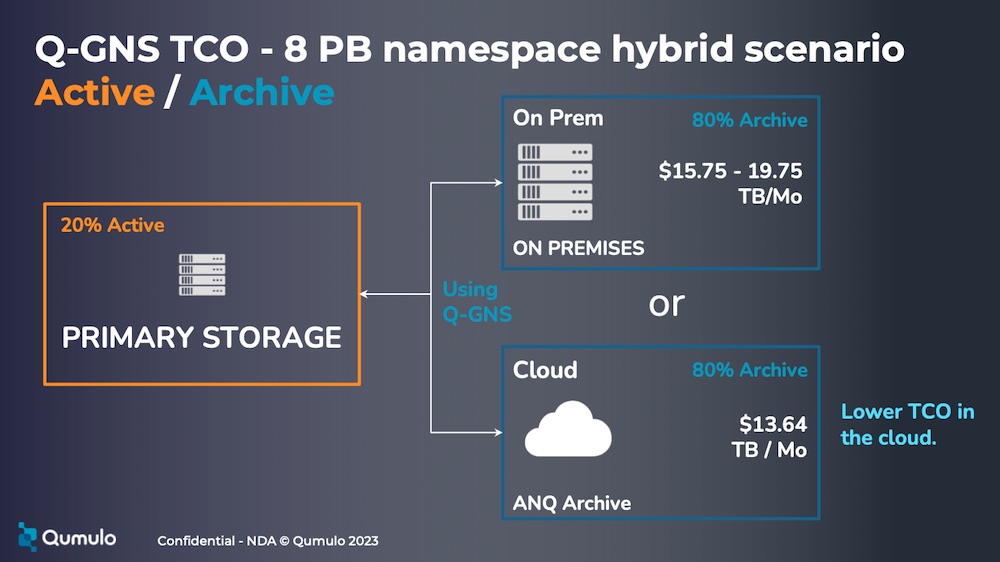
The team adds Nexus, a way to federate dispersed firm's clusters and manage them in a central way. So with Nexus and GNS, the company makes great progress towards a full residence independence for storage.














 Subscribe to our free daily newsletter
Subscribe to our free daily newsletter


